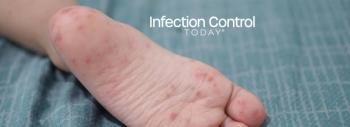
FDA Clears New Surgical Marker; Uses RFID to Protect Patients
The Food and Drug Administration (FDA) has cleared for marketing an external surgical marker tag intended to minimize the likelihood of wrong-site, wrong-procedure and wrong-patient surgeries. The device is the first such surgical marker to utilize radio frequency identification (RFID) technology to mark an anatomical site for surgery. It is intended to offer additional protection for patients who are undergoing surgery.
The product is the SurgiChip Tag Surgical Marker system, manufactured by SurgiChip Inc., of Palm Beach Gardens, Fla. It consists of the tag, which is a "smart" label with an integrated passive transponder, along with a printer, an encoder and a RFID reader.
Here's how it works: The patient's name and surgical site are printed on the SurgiChip tag. The inside of the tag is encoded with the date of surgery, type of procedure and name of surgeon. The tag is scanned with a desktop RFID reader for confirmation by the patient and is then placed in the patient's hospital file.
On the day of surgery, the tag is removed from the file and scanned again, and the encoded information is verified by the patient. The tag, which has an adhesive backing, is then placed on the patient's body near the surgical site.
In the operating room, the tag is again scanned and the encoded information is verified with the patient's chart. The tag is removed just before surgery and returned to the patient's hospital file.
FDA cleared the device for marketing based on a review of safety, effectiveness and software validation information submitted by the manufacturer.
Source: FDA
Newsletter
Stay prepared and protected with Infection Control Today's newsletter, delivering essential updates, best practices, and expert insights for infection preventionists.






